Several
days ago, we decided to visit the Holy rocks of Meteora along with the teachers
of our school. On Friday morning the bus transferred us to this sacred place.
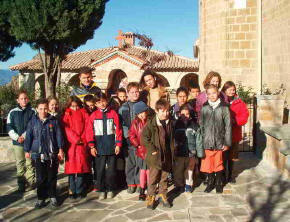
The view from the rocks was breathtaking. We felt awe and
fear, when the steep cliffs and rocks came into sight through the windows of the
bus. Although we were fearful of the bold cliffs, deep down we knew nothing
would go wrong, for we felt that an invisible divine power was protecting us
from getting harmed. While gazing at the countless rocks, some of them were
taking the shape of human figures while others were converted into works of art,
carved by nature itself.
Before we knew it, we arrived at the Monastery of St.
Stephen.
What we saw is hard to
describe. Beneath us laid the Pineios River as a
giant snake and an endless straight line was shining at the light of the morning
sun and got lost deep inside the Thessaly plain. Far from us, the light blue
mountain range of Pindos was standing. The beautiful town of Kalambaka, was
resting at the foot of the Meteora rocks.
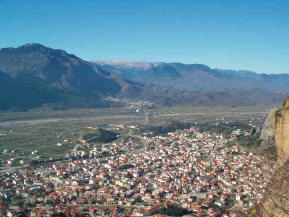
Having taking several pictures of the picturesque
landscape, we walked on a small wooden bridge and reached the entrance of the
monastery. We crossed a heavy arched wooden door and entered the monastery.
There,
we waited for Sister Nicodeme to show us around.
First, we visited the Church of Saint Charalambos and all students were welcomed
to the Saint’s relic.
The church was as old as
the others were. There, a group of painters were on scaffolds and painted images
of the saints on the walls. We were thoroughly
explained how demanding a job is to draw a painting on the surface of a wall.
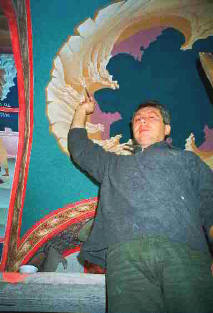 Later on, we visited St. Stephen’s Vestry. In this area, old embroidered
epitrachilia, epigonatia and vestments are stored. In the vestry we also saw an
Episcopal throne made of ivory, some gold
crosses, but what really impressed us were some old papyri dating back to the
6th century AD.
Later on, we visited St. Stephen’s Vestry. In this area, old embroidered
epitrachilia, epigonatia and vestments are stored. In the vestry we also saw an
Episcopal throne made of ivory, some gold
crosses, but what really impressed us were some old papyri dating back to the
6th century AD.
After
visiting the Church of St. Stephen, the Holy Mother told us about his story and
that Saint Philotheus was one of the founders who came from a nearby village,
Rizoma.
Then,
we went to the dining room and the nuns offered us sweets, juice and water. An
elderly nun gave us presents, a cross and a bookmark, and wished us a Merry
Christmas.
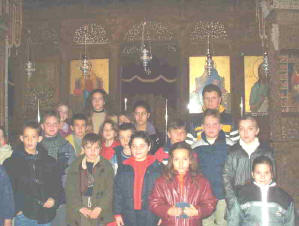
A bit later, after
saying goodbye and thanking the nuns for their hospitality, we headed towards
the Holy Monastery of Rousanou. Our ascent was
impeded by the number of stairs and the appearance of two bridges.
This Monastery is
smaller than the monastery of St. Stephen. We were really struck by the
small church and its old but vivid frescoes.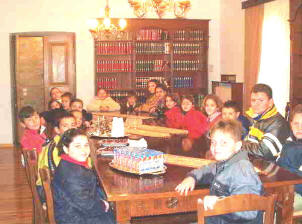 Nun Vasiliki, described the murals and explained their significance in
detail. Patiently, she explained every single thing that we saw in this small
church. Despite the fact that we had visited the monastery with our parents
again in the past, it was not until now that we really became acquainted with
this historic monastery. We were also told that
the murals were painted by Tzortzis, a notable painter’s student (Theofanis)
whose birthplace was probably Kalambaka, in 1569 AD.
Nun Vasiliki, described the murals and explained their significance in
detail. Patiently, she explained every single thing that we saw in this small
church. Despite the fact that we had visited the monastery with our parents
again in the past, it was not until now that we really became acquainted with
this historic monastery. We were also told that
the murals were painted by Tzortzis, a notable painter’s student (Theofanis)
whose birthplace was probably Kalambaka, in 1569 AD.
At
the same time, a group of Chinese tourists were also guided to the Holy
Monastery. That’s only indicative of the popularity and uniqueness of the Holy
Meteora rocks throughout the world.
At the end of our visit, the nuns offered us some fresh
treats and wished us all the best.
These
were our impressions from our visit to the nunneries of Meteora. Our teachers
promised us that in the spring we would visit the rest of the monasteries too,
and that we would resume our journey to Meteora.
Translation by Christine Boutsia